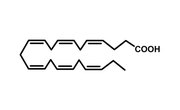
Titration is used to determine the concentration of an unknown substance via the molar relationship expressed through the chemical reaction equation. Using these relationships, the pH value can be determined by calculating the concentration of hydrogen ions (H+) and applying the pH equation. Commonly, titration uses a pH indicator in the unknown solution that changes color when the solution reaches a neutral pH (depending on the indicator, you can choose the pH at which the color change occurs). Given what is known about the solution you added to neutralize the unknown, you can find the pH of the unknown solution.
- Paper
- Pencil
- Calculator
- Results of titration experiment
Measure accurately during your experiment because this will be a major factor that influences pH in the end. Follow an example in your lab experiment book. This will help you keep all the quantities straight. Look for clues in your experimental procedure about how the standard relates to the unknown. This will help you determine the reaction-specific multiplicative factor.
Acids and bases are hazardous and can potentially burn your skin.
Take the results from your titration experiment and calculate the moles (mol) of standard it took to react with the unknown. Begin by taking the volume of standard you added and converting this to the number of moles of the standard molecule. You should know the concentration of the standard and the volume you added to the unknown. These two pieces can be combined by multiplying the volume added (in liters) and the concentration (in moles per liter). Now you have the moles of standard it took to neutralize the unknown solution.
Relate the moles of standard solution to the moles of unknown solution. Because this is a neutralization reaction, assume that the standard solution is the base (OH- ions). You calculated the moles of base it took to neutralize the unknown acid (H+). Use the calculated number of moles of base and relate it, through the chemical reaction equation, to the number of moles of acid in the unknown. If your reaction is 1 mol of base for every 1 mol of acid (as most usually are), then you know that the number of moles of standard is the same as the number of moles of the unknown. If the number is not 1 to 1, then multiply by the correct factor (this is reaction specific). You now have the number of moles of acid (H+) in the unknown solution.
Convert the number of moles of H+ to the concentration of H+ by taking the number of moles of H+ and dividing by the volume (in liters) of unknown that you originally had. This gives you the concentration of H+ in the unknown solution.
Take the concentration of H+ (in moles per liter) and plug it into the following pH formula: pH=-log(H+). Determine the negative log of the H+ concentration using your calculator. You will arrive at the pH value of the unknown solution. If your solution is acidic, you will have a pH less than seven; if neutral, a pH equal to seven; and if basic, a pH greater than seven.
Things You'll Need
Tips
Warnings
References
- "Fundamentals of Analytical Chemistry," 8th ed; Douglas Skoog, Donald West, F. Holler, Stanley Crouch; 2004
Tips
- Measure accurately during your experiment because this will be a major factor that influences pH in the end. Follow an example in your lab experiment book. This will help you keep all the quantities straight. Look for clues in your experimental procedure about how the standard relates to the unknown. This will help you determine the reaction-specific multiplicative factor.
Warnings
- Acids and bases are hazardous and can potentially burn your skin.
About the Author
Philip J. Carlson is currently a Ph.D. candidate in the department of chemistry at Iowa State University. He earned a B.S. degree (cum laude) with majors in chemistry and mathematics. Carlson also has a B.A. in evangelism and missions, and an A.S. degree in chemistry. He has published in a number of peer-reviewed journals and even has a pending patent.
Photo Credits
NA/AbleStock.com/Getty Images
